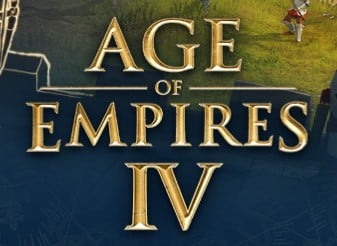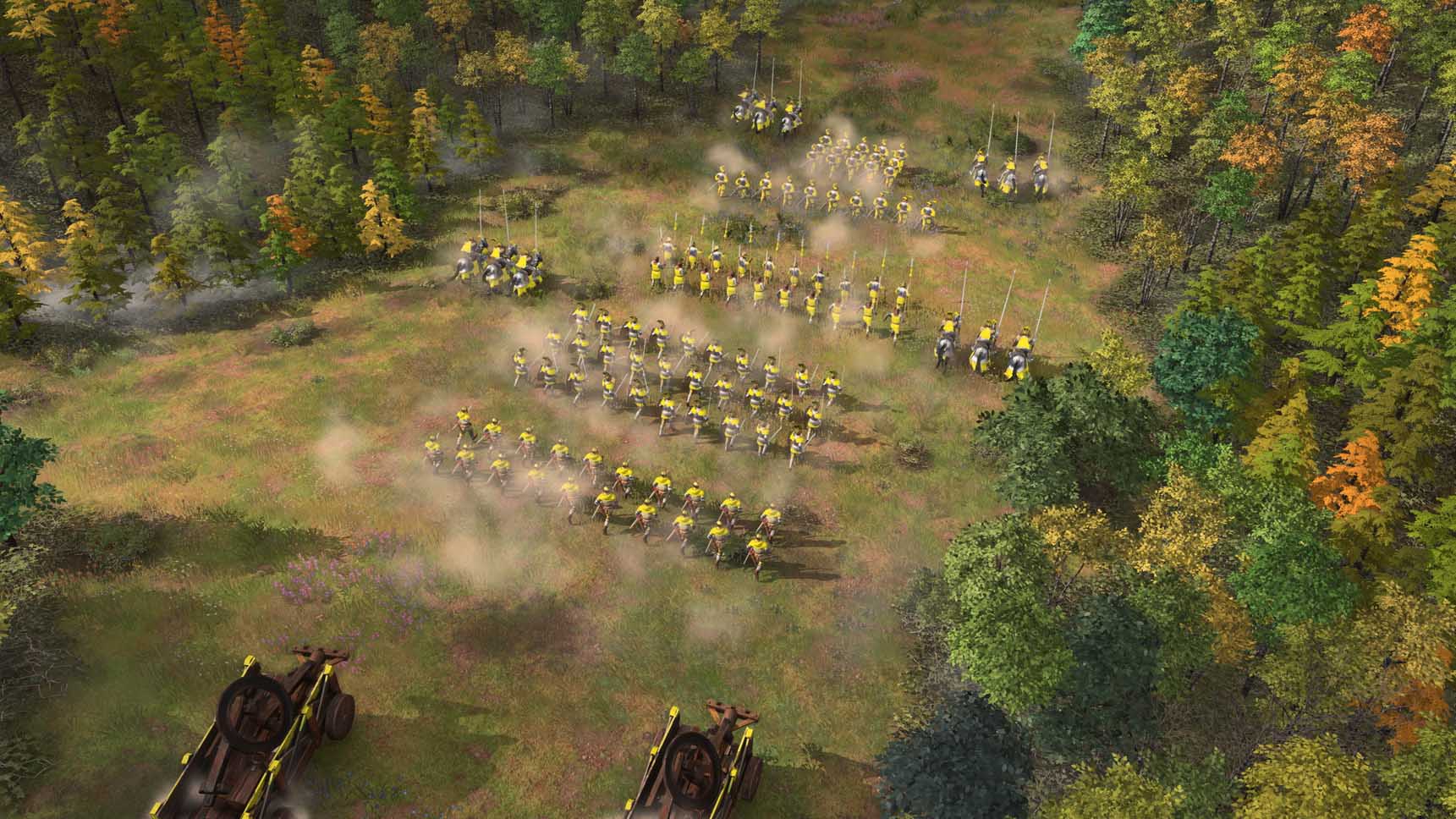
Age of Empires 4 is a revival of the historical RTS series that has been around since the late '90s. It's immediately familiar for anyone who has played previous entries, but it's also unique in terms of playable civilizations, their bonuses, and their unique units. This guide aims to help new players identify how these civilizations play out at a fairly basic level, as well as to identify some of the crucial unique units that can change the way a match is played.
Abbasid Dynasty
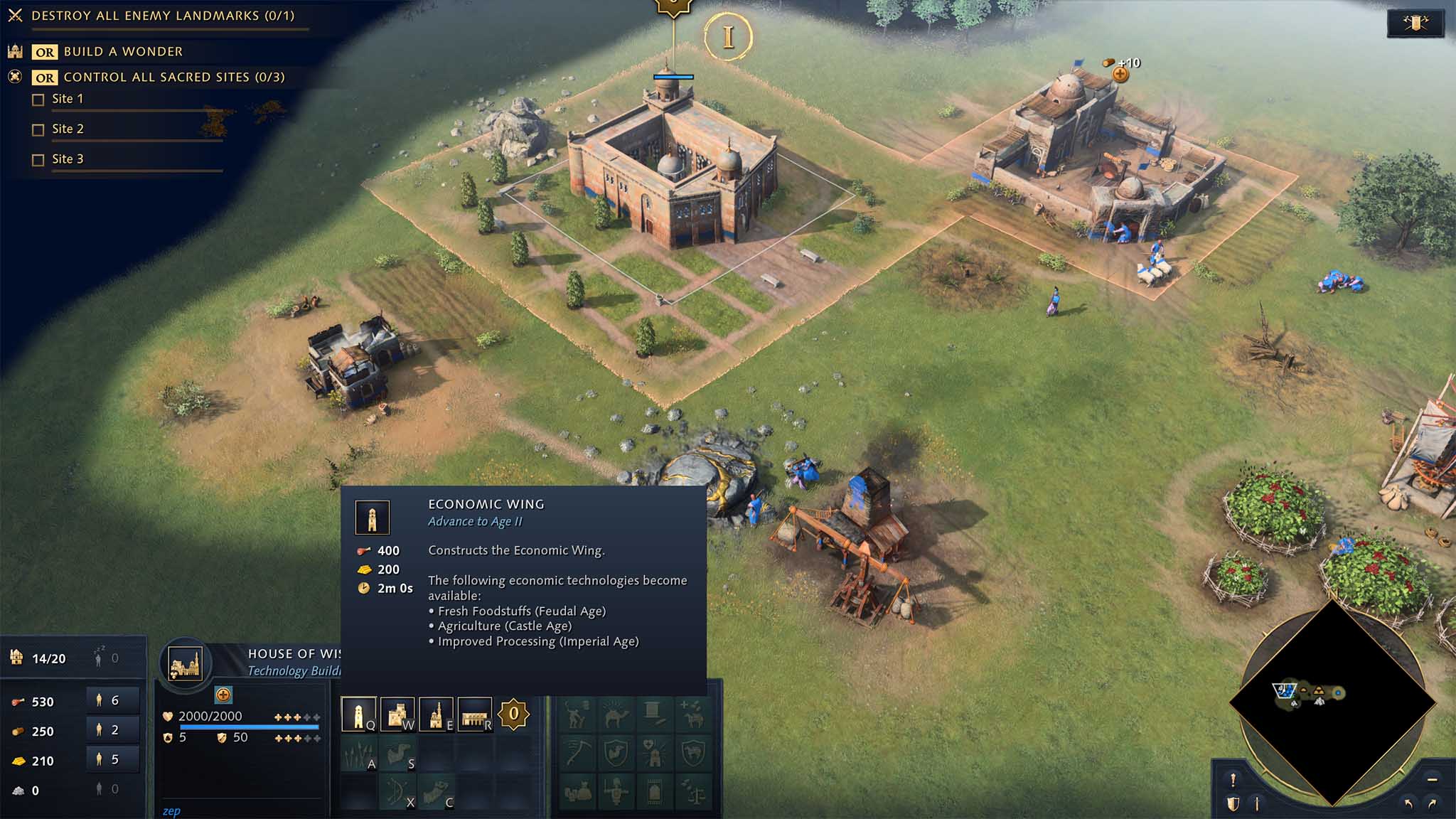
The Abbasid Dynasty civilization is pulled from the era ranging from about 750 to 1517 CE, during which time Islam was experiencing a golden age. In Age of Empires 4, the civilization centers around a unique building called the House of Wisdom. This civ has an intermediate difficulty level as assigned by the developers, making it a bit more challenging than the English, for example.
There is a focus on research for the Abbasid Dynasty, mostly revolving around the House of Wisdom unique building. This must be built by Villagers (it doesn't take long and costs just 50 wood) and is separate from the Town Center.
There are four wings — Culture, Economy, Military, and Trade — available to choose from, each with their own unique researchable technologies. The Culture wing, for example, can help reduce the cost of all future technologies by 30% with its Preservation of Knowledge technology. Meanwhile, the Economy wing has a Fresh Foodstuffs technology that reduces the cost of creating new villagers by 50%. There are a bunch more technologies available, each offering a significant boost.
Upon gathering enough resources and choosing a new wing, your civilization will advance to the next age. Villagers are not required to build a new wing, leaving them open to work on gathering resources and erecting new buildings. Once a wing has been created, you can begin researching the associated technologies. In the final age, you can research the outstanding wing to access the unique techs.
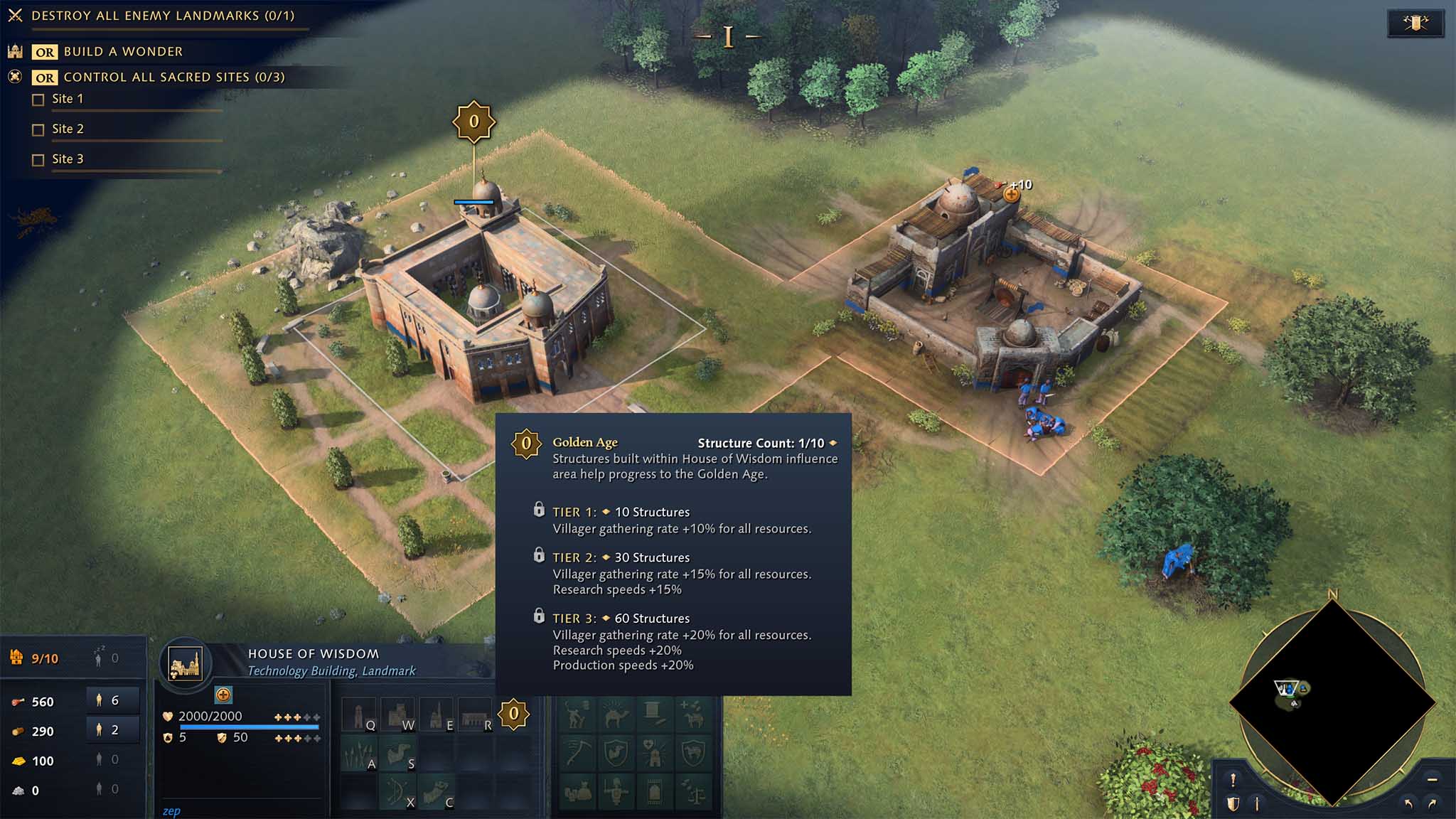
There is also an area of influence around the House of Wisdom, so strategic positioning is recommended. The number of buildings within the area of influence — which is expanded with each new building — contributes to a Golden Age. Ten structures within range increases villager production rate by 10%. Thirty structures adds 15% villager gathering rate and 15% added research speed. And 60 structures improves villager gathering rate by 20%, research speed by 20%, and production speed by 20%.
The Abbasid Dynasty has a bunch of other unique bonuses as well.
Get the Windows Central Newsletter
All the latest news, reviews, and guides for Windows and Xbox diehards.
- Villagers gather from berry bushes 25% faster. Villagers cannot gather meat from boars.
- Siege Engineering technology is not required for infantry to create siege rams and towers.
- Buildings within range of the House of Wisdom receive +5 fire armor.
- Docks cost 50% fewer resources.
There are two unique units available to the Abbasid Dynasty. The Camel Archer and Camel Rider are both highly effective against enemy cavalry, dealing bonus damage in battle. Camel Archers also deal extra damage to spearmen. The drawback here is the high cost; use them wisely in battle.
Chinese
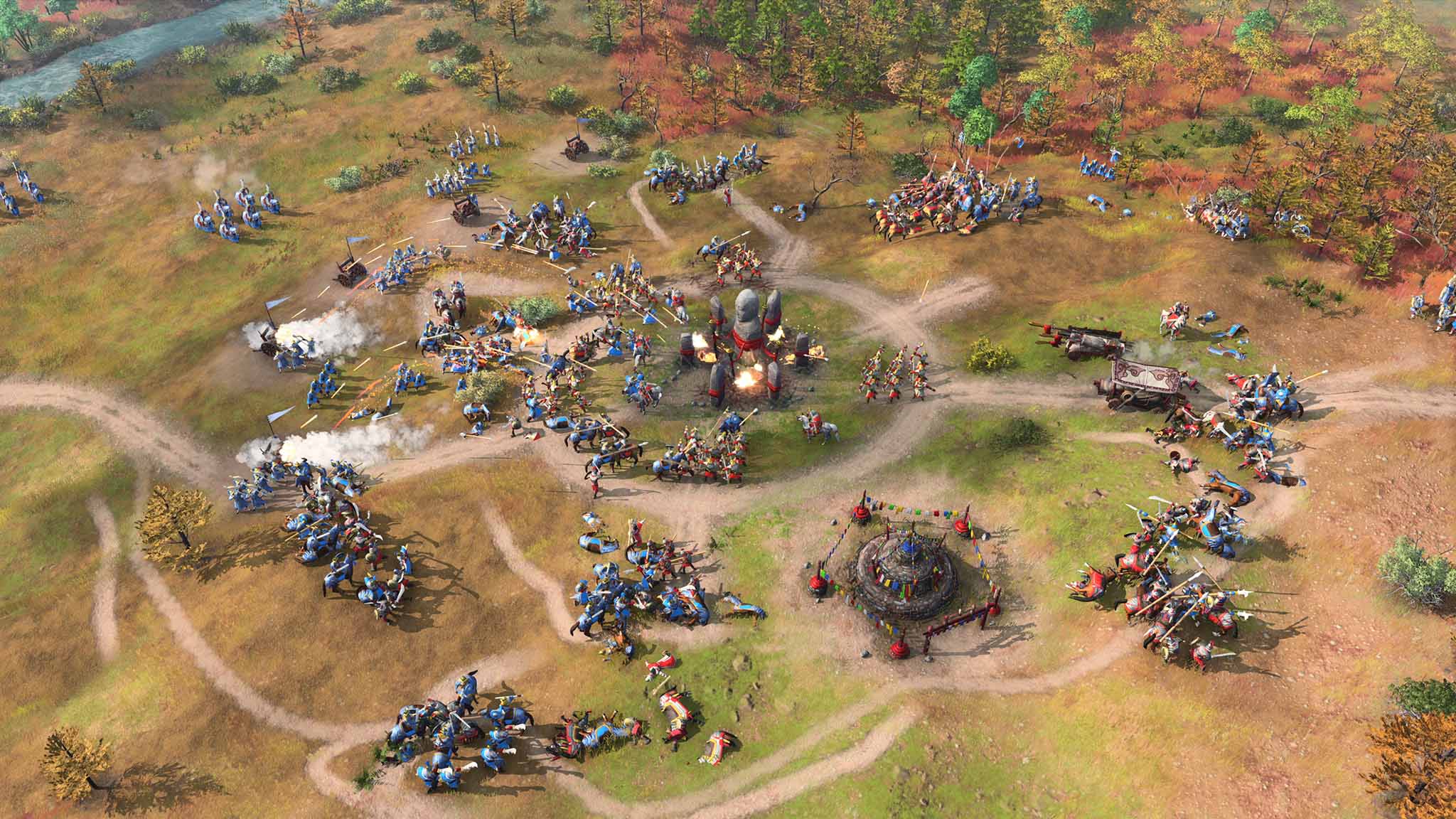
The Chinese civilization in Age 4 runs from year 907 until 1644 CE. It focuses on a variety of unique military gunpowder units with free Chemistry tech in the Imperial Age, strong dynastic bonuses through the ages, and steady expansion with 100% faster build times from Villagers for all building save defensive structures (which get a 50% bonus). This civ gets a three-star difficulty rating from the devs, meaning it's not exactly recommended for those just starting out with the game.
Chinese begin each game in the Tang Dynasty, which is unique to the civ. This provides Scouts with 30% extra line of sight, crucial in the early game when most of the map is undiscovered. Chinese players must construct one landmark to move to the next age. However, unlike other civs, Chinese can build both landmarks to enter a different Dynasty.
Building both Dark Age landmarks enters the Chinese into the Song Dynasty, with 35% faster villager creation as well as a unique Village building that increases the population limit by 40. Unique to the Chinese is also a Zhuge Nu unit with a repeater crossbow that's good against unarmored enemies.
Chinese dynasties are not a required part of play, but they do provide you with a set of bonuses that's hard to ignore. Build both landmarks from an Age to enter a new Dynasty.
Building both Feudal Age landmarks ushers in the Yuan Dynasty, granting Villagers, Officials, and military units an extra 15% movement speed. The unique Granary building boosts farm harvest speed by 15% and generates tax gold when food is dropped off. The unique Fire Lancer is a cavalry unit that can charge enemies and deal a lot of damage against siege equipment and buildings.
Finally, the Ming Dynasty occurs when both Castle Age landmarks are built. Military units gain 10% extra health, and the Pagoda unique building and Grenadier unique unit become available. A relic housed in a Pagoda generates 50 of each resource every 30 seconds, while the Grenadier is considered ranged infantry with an area-of-effect attack.
One major thing to note is that entering a new dynasty removes the bonuses from the previous dynasty. If you'd like to continue building the unique units granted from those dynasties, you can build the Spirit Way unique building in the third age.
The Imperial Official is one of the most important unique units available to the Chinese. This worker gathers gold from buildings that can collect taxes; it can also improve the efficiency of a building if specifically tasked. The Nest of Bees is another unique unit; its explosive siege capabilities can quickly make waste of buildings or grouped enemies. A final bonus looks to naval play, with docks receiving a flat 20% bonus speed to all work.
Delhi Sultanate
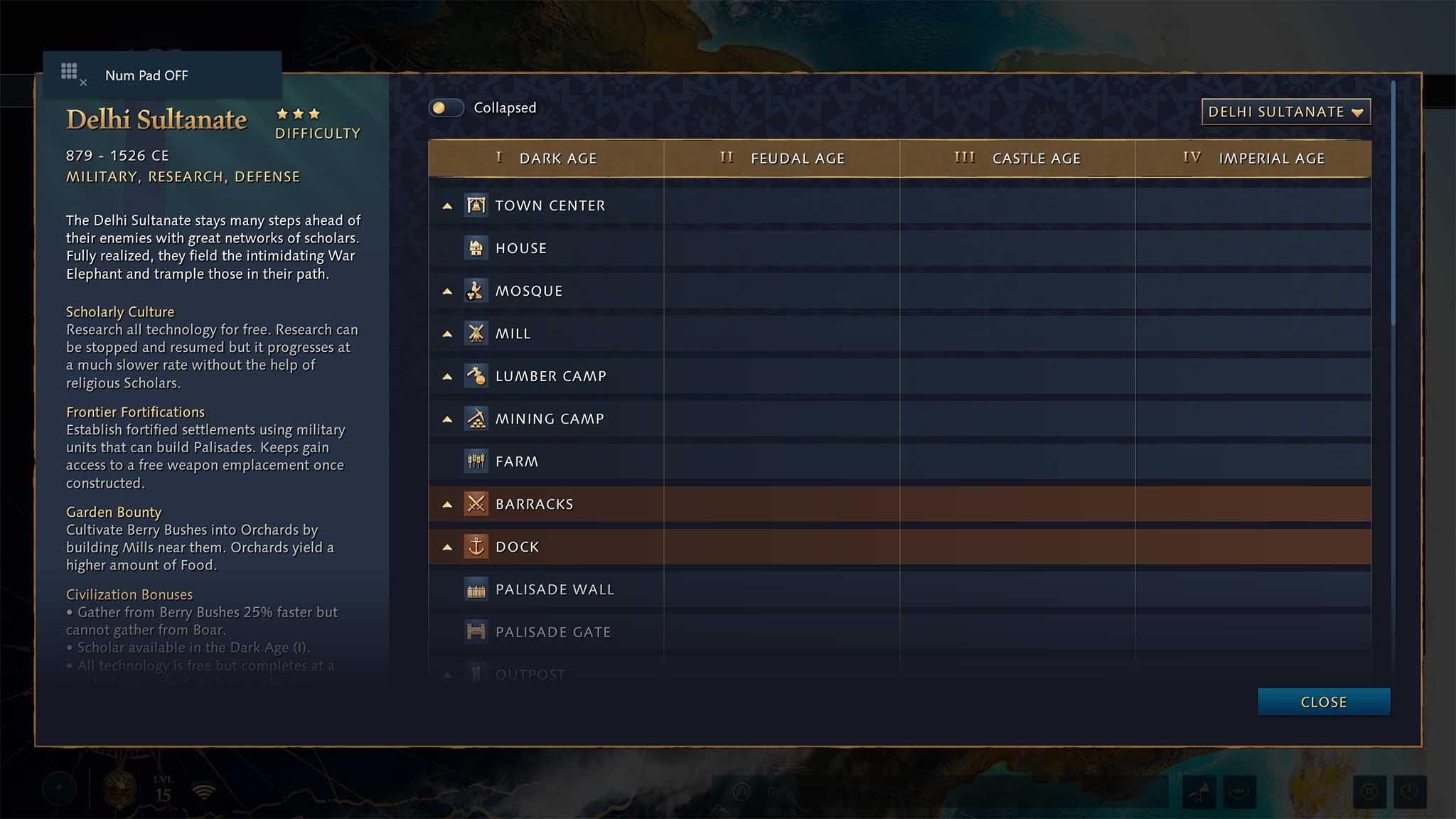
The Delhi Sultanate is pulled from the time period between 879 and 1526 CE. This civilization focuses on a strong military backed by War Elephants, free technology research helped by Scholars, and strong defenses via military units that can build Palisades. This civ has a three-star difficulty rating, making it better suited for those who are accustomed to how the game works.
The unique Scholar unit, available in the Dark Age from the unique Mosque building and later from the unique Dome of the Faith building, can be garrisoned to speed up research times. Any buildings within the area of influence of a Mosque with a Scholar inside are affected. Delhi Sultanate technologies do not cost any resources, but they do take longer to complete — the more Scholars garrisoned, the faster the research time. Scholars can also heal allies, convert enemies, and capture Sacred Sites. A unique tech called Efficient Production allows Scholars to garrison inside military buildings to provide similar research bonuses.
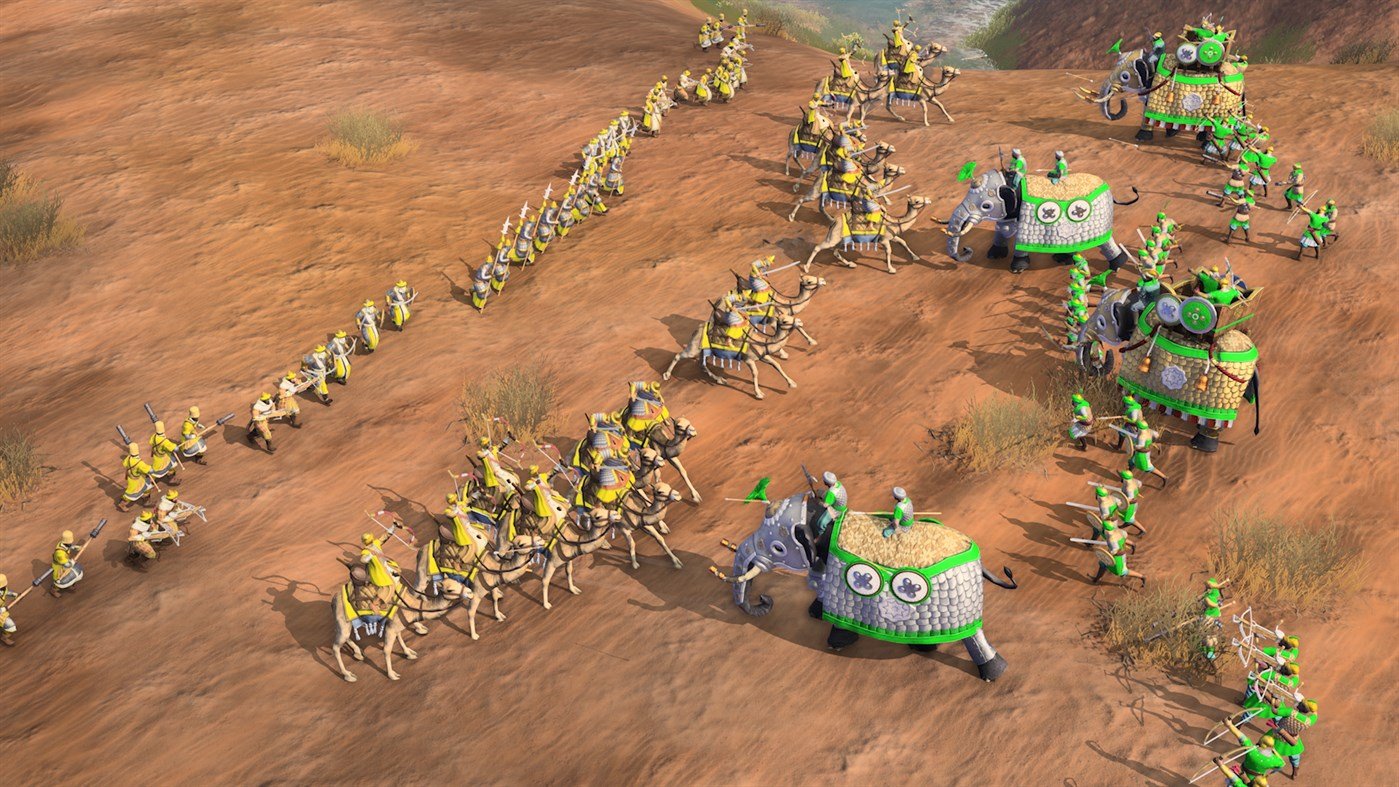
Any berry bushes on the map can be turned into an orchard just by building a Mill nearby. This doubles the amount of available food from each bush, and Delhi Sultanate villagers naturally collect food from them 25% faster. They cannot, however, collect food from wild boars. Those focusing on naval play will also notice that fishing ships have a bit of extra defense; they come equipped with a regular Archer.
Because of the slower research times and the general tendency for Delhi Sultanate to require extra time to become truly deadly, infantry units have the ability to construct Palisades. Any Keeps built by Delhi Sultanate players also immediately gain one free weapon upgrade, adding to defense.
Unique Tower War Elephants, the ranged alternative to the standard War Elephant (also unique to this civ), are cavalry with a massive health bar and powerful attack. They can attack stone walls — something that's not possible with many units — but they are expensive and slow. Palace of the Sultan, one of the landmarks used to advance to the final age, is an expensive building that automatically produces Tower War Elephants. It can hold up to four Scholars to speed up production.
English
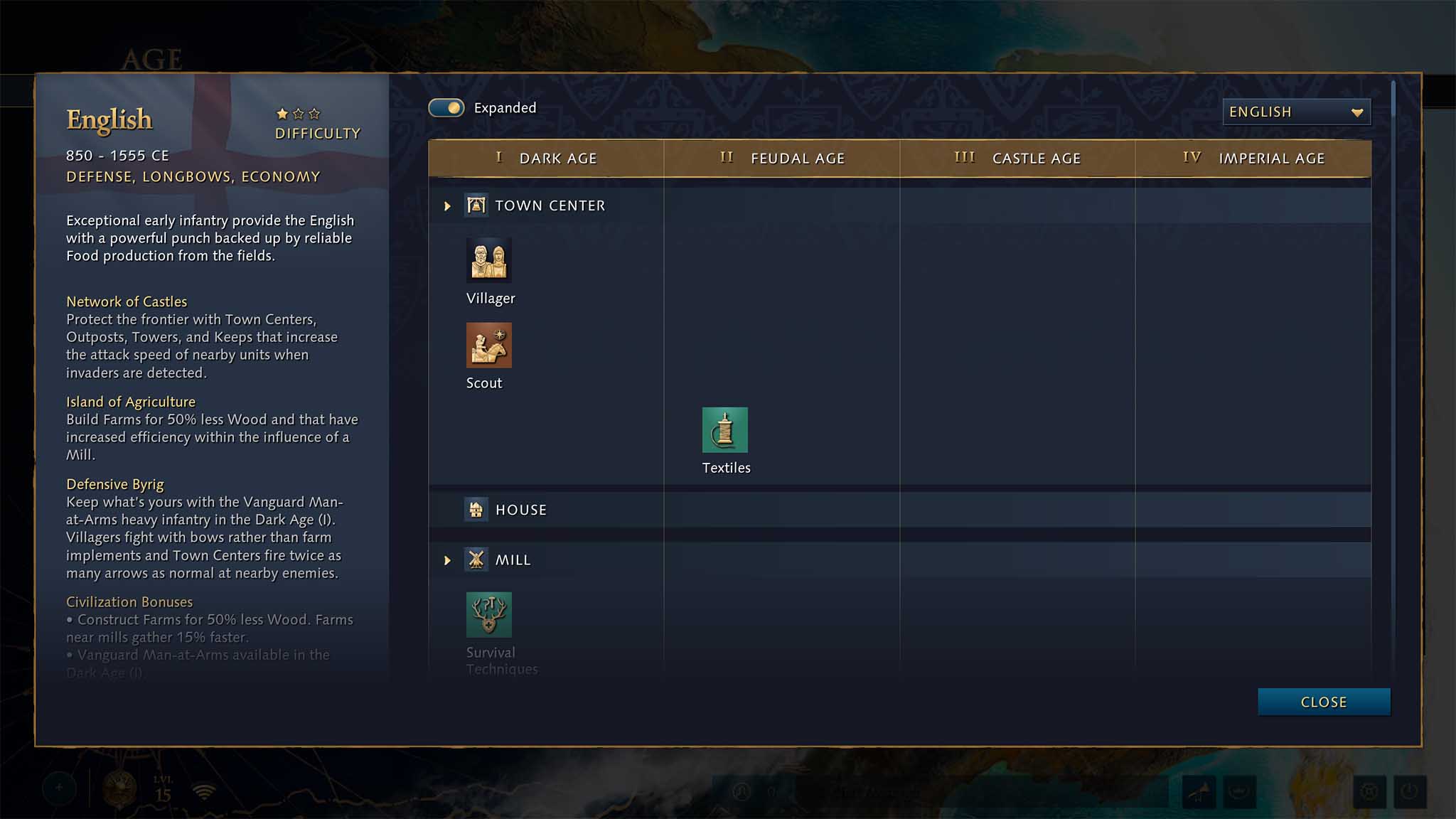
The English civilization runs from the era of 850 until 1555 CE, focusing on strong defenses, quick food production, and strong ranged units. This is one of the easier civilizations to play, earning a one-star difficulty from the developers. If you're a newcomer to Age of Empires or to the RTS genre as a whole, this is a great place to start.
If you're new to the game or to the RTS genre, the English civilization is a great place to start. It plays a lot like the Britons from Age 2.
The English can get off to a quick military start thanks to the availability of the Vanguard Man-at-Arms unique unit in the first age. These units have excellent armor (there is one extra armor upgrade available compared to other civs) but aren't very fast; they can be upgraded to Early Man-at-Arms and through to Elite Man-at-Arms as you age up. Each of these units costs 100 food and 20 gold, so it's a good thing there's an economic bonus related to farming. Any farms built within the immediate range of a Mill cost 50% less wood and can be harvested 15% faster.
Defensive expansion gets a boost here with the Network of Castles unique bonus. Towers, Keeps, Town Centers, and Outposts lend a 25% attack speed bonus to any allied units when enemy units are within range. English Villagers attack with ranged bows instead of melee weapons, and Town Centers fire double the amount of arrows at any enemies within range. Military ships have +1 extra range.
The English have access to a Longbowman unique unit that can be created starting in the Feudal Age for 40 food and 50 wood. The Longbowman fires further than regular Archers and can quickly create palings — sharpened wooden spikes — to guard against cavalry charges. They excel against unarmored targets, but massed groupings are effective against just about anything. A unique tech ability called Setup Camp allows Longbowmen to heal when in the vicinity of the triggered camp.
French
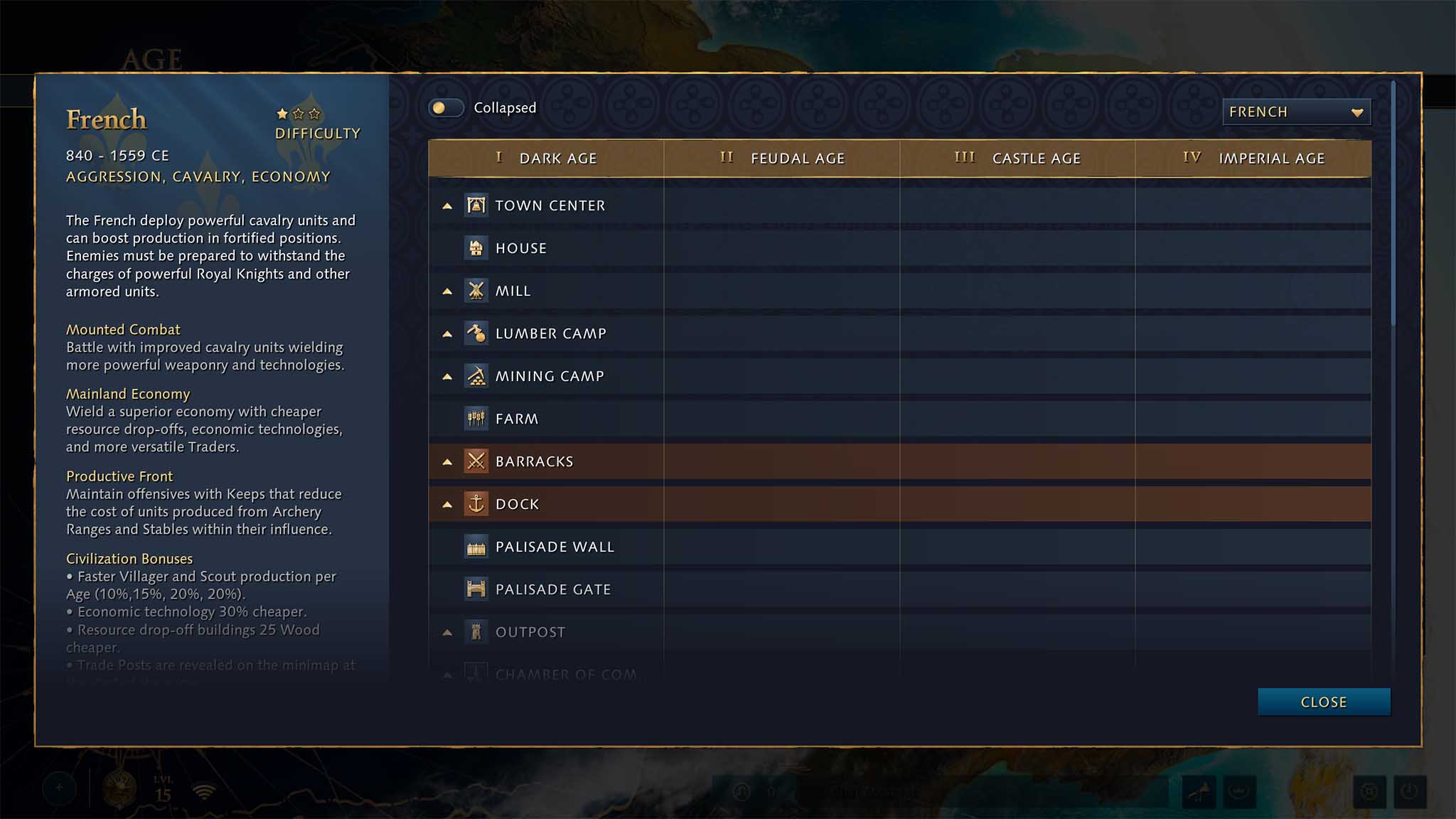
The French civilization runs from 840 until 1559 CE in Age of Empires 4, focusing on deadly cavalry backed by a strong economy. This is another civ with a one-star difficulty rating, making it suited for beginners.
French players will be able to bolster their economy early thanks to drop-off sites that cost 25 less wood to build. Villagers and Scouts are created faster, starting at 10% in the Dark Age and climbing 5% in each following age. If that wasn't enough, researching economic technologies costs 30% fewer resources and melee damage technologies are completely free.
Building your military district around a Keep will reduce Archery Range and Stable production costs by 20%. This plays well with expensive Royal Knights.
Trading is crucial for any civilization, but even more so for the French. Neutral trading posts are revealed to the French at the start of each match without having to scout the map. And once you have a Market running and have created Traders to make the trip, you can select any resource for them to return with. If you're low on food, for example, you can switch over for a while until your granary is refilled. Trade ships also carry 20% extra gold on return trips.
In terms of building your base, you will want to center your Keep in a spot with room for building around it. Any Archery Ranges and Stables created within the Keep's influence area have a 20% cost reduction on any created troops. This plays well with French unique units, including the Royal Knight and the Arbalétrier.
The Royal Knight can charge the enemy, dealing extra damage for three seconds after the charge. A unique Chivalry tech adds health regeneration out of combat, while a Cantled Saddles unique tech boosts bonus damage by 10 following a charge. The Arbalétrier is a ranged unit that excels against armored foes. They can deploy a defensive pavise shield to protect against enemy counterfire, and they also have a unique Gambesons tech that adds +5 melee armor.
The French Cannon unique unit is the "most powerful siege cannon" in the game. It deals extra damage to buildings, but it's also great against just about anything with a pulse. The Galleass, the last of the French unique units, is a massive war galley that can bombard enemy ships, land-based units, and buildings.
Holy Roman Empire
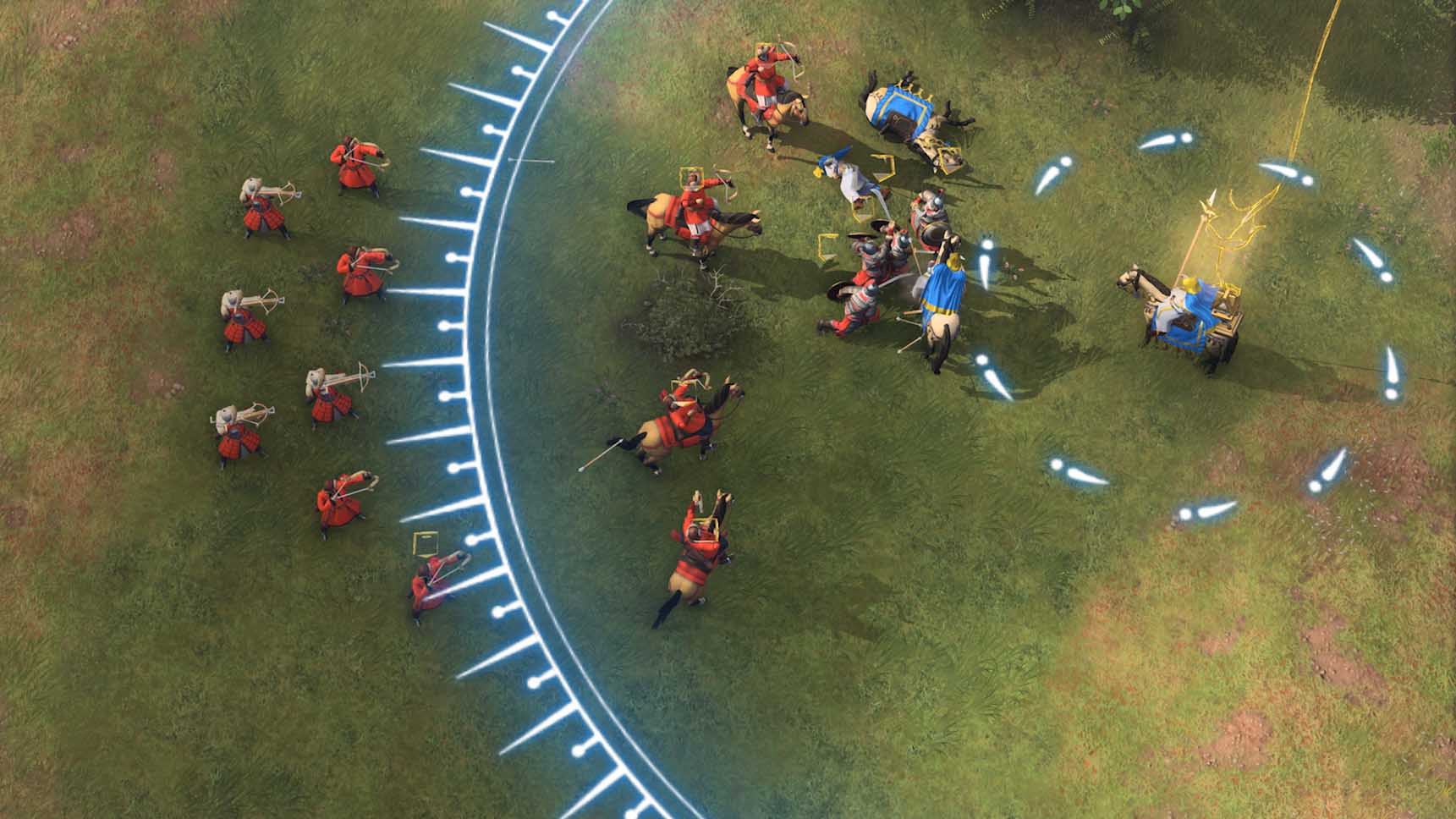
The Holy Roman Empire in Age of Empires 4 ranges from the time period between 936 and 1517 CE. It focuses on economic strength through religion, deadly infantry, and lasting architecture through an Emergency Repairs ability. This civ has a two-star difficulty rating, making it a good choice for those who understand the basics of an RTS.
The Prelate, a unique religious unit available from the first age and on, is no doubt the most important unit available to the Holy Roman Empire. When placed near Villagers, it will heal and inspire them to work 40% faster for 30 seconds; this is a great way to boost your economy in the Dark Age. The Prelate is also capable of collecting relics, capturing Sacred Sites, and converting enemies. The Aachen Chapel, one of the landmarks required to move to the Feudal Age, can inspire a large area as long as a Prelate is garrisoned inside.
With the Inspired Warriors tech researched in the Castle Age, Prelates can also inspire military units. This improves armor by +1 and adds 15% extra damage. This plays extremely well with the Holy Roman Empire's strong infantry. Early Man-at-Arms are available earlier in the Feudal Age, and there are a couple of unique upgrades that can turn them into true killers. The unique Landsknecht unit is also available in the Castle Age. This infantry does area melee damage but is rather fragile due to a lack of armor.
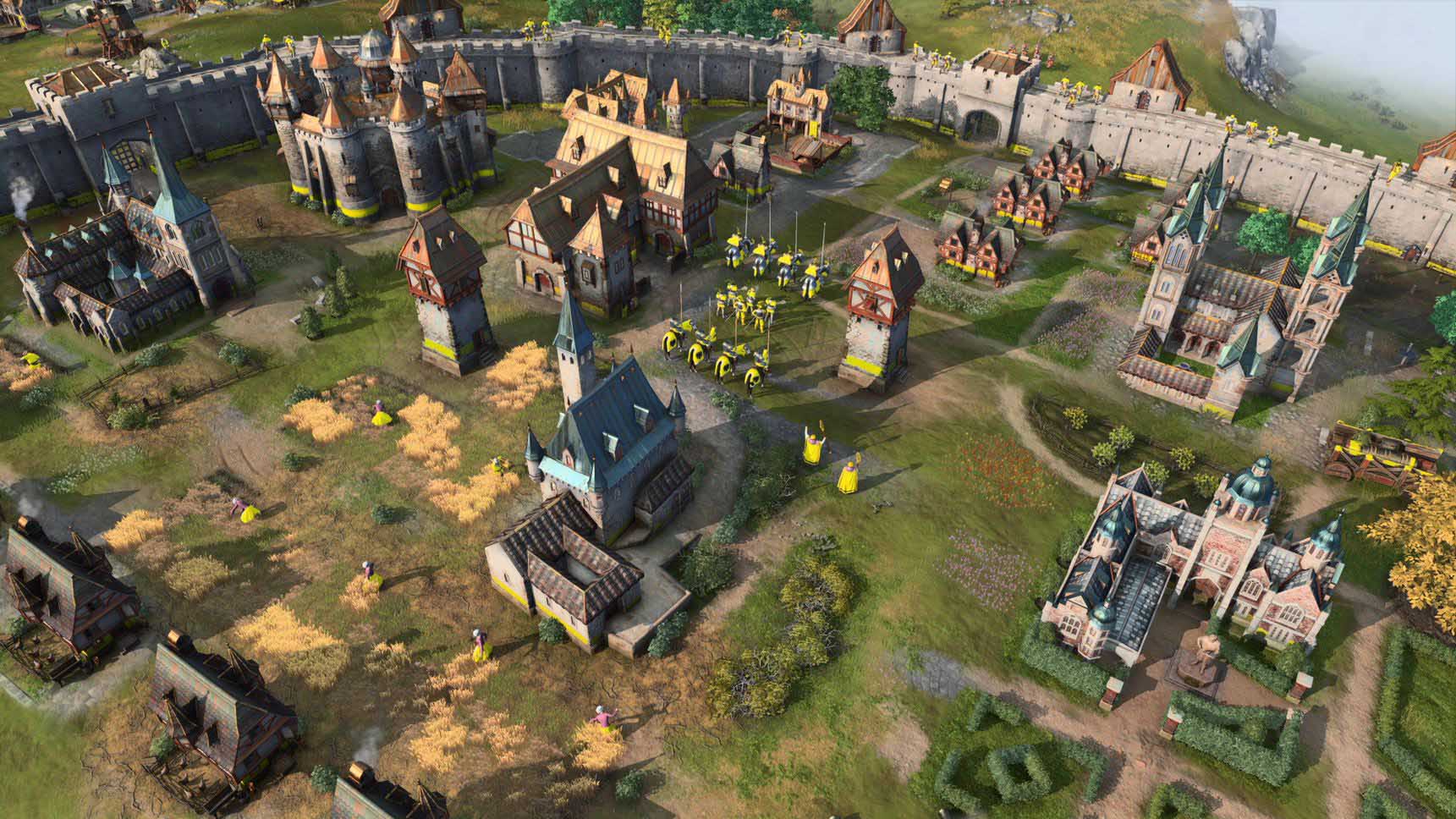
Adding to the general survivability of the Holy Roman Empire is the Emergency Repairs ability. Any buildings built within the influence range of a Town Center or Keep can receive quick and automatic repairs when required. This is perfect for when you need to gain a bit of time as your defensive units are created.
For added defense, relics can be garrisoned inside Keeps, Towers, and Outposts, adding range, armor, and damage. Any weapon emplacements you add to these buildings cost 25% less resources. Relics can also be garrisoned inside a Dock, which adds 5% attack speed to your ships per relic (up to 25%).
Mongols
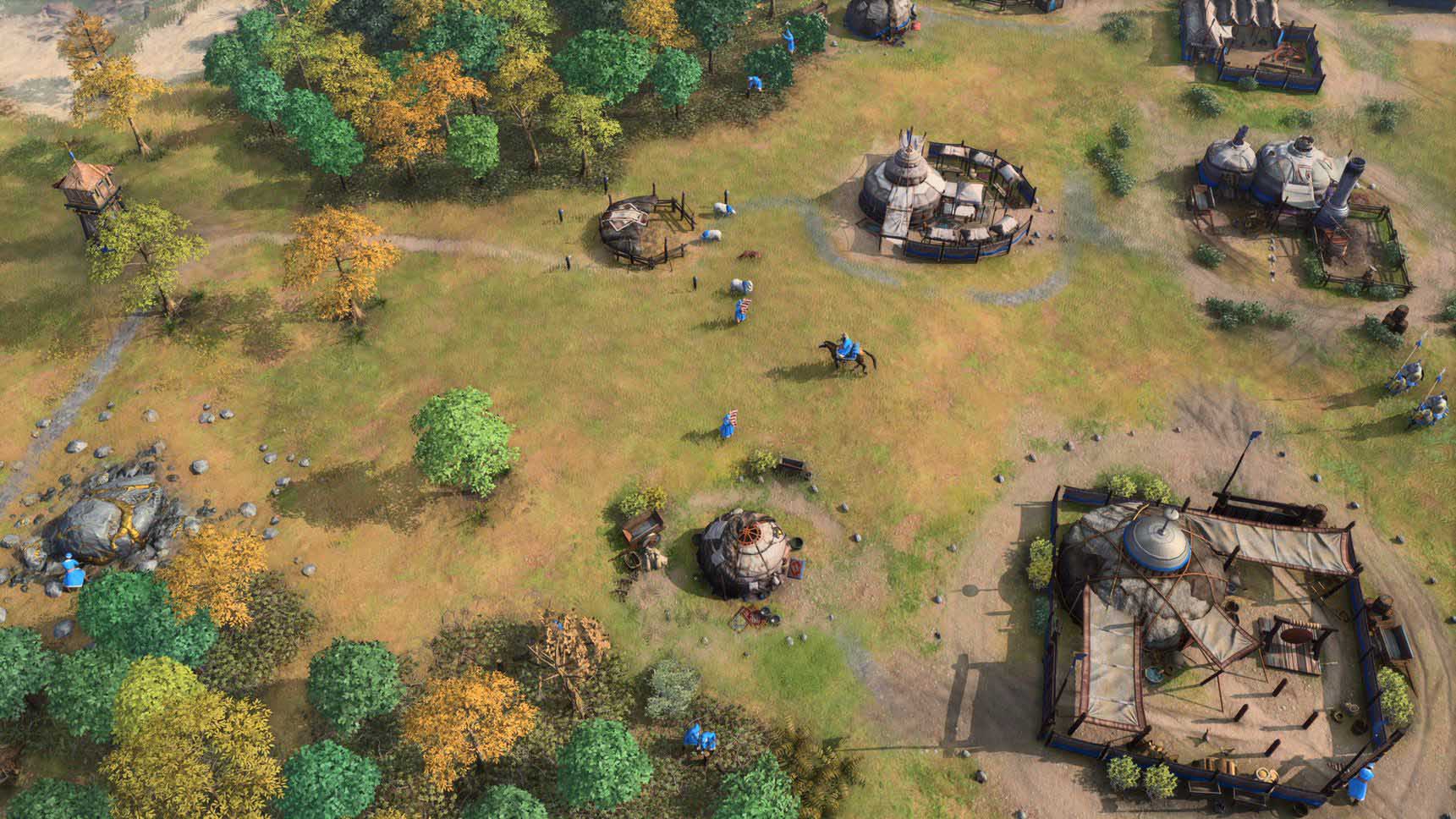
The Mongols in Age of Empires 4 have a 500-year period ranging from 1000 to 1500 CE. Their playstyle is unlike any other civ in the game, giving them a three-star difficulty rating. This isn't a great place to start if you're new to the RTS genre, but it is a great place to end up. Mongols don't need to build Houses (you start the game with max population), and in fact all of their buildings can be packed up and moved. This, along with strong cavalry from the start of the game, makes them incredibly mobile. Even farms are replaced with movable pastures that produce one sheep every 90 seconds.
The unique Ger building is used to collect all resources save stone. For that you must use the unique Ovoo building. It is built on top of a stone deposit and automatically mines stone. Only one Ovoo can be built at a time. This is also a place where some unique Mongol technologies can be researched. Any buildings within the influence of an Ovoo receive a boost to unit production and research speed. Stone is used differently by the Mongols. They don't build Keeps or Stone walls, but they can research unique techs that allow for buildings to double produce units.
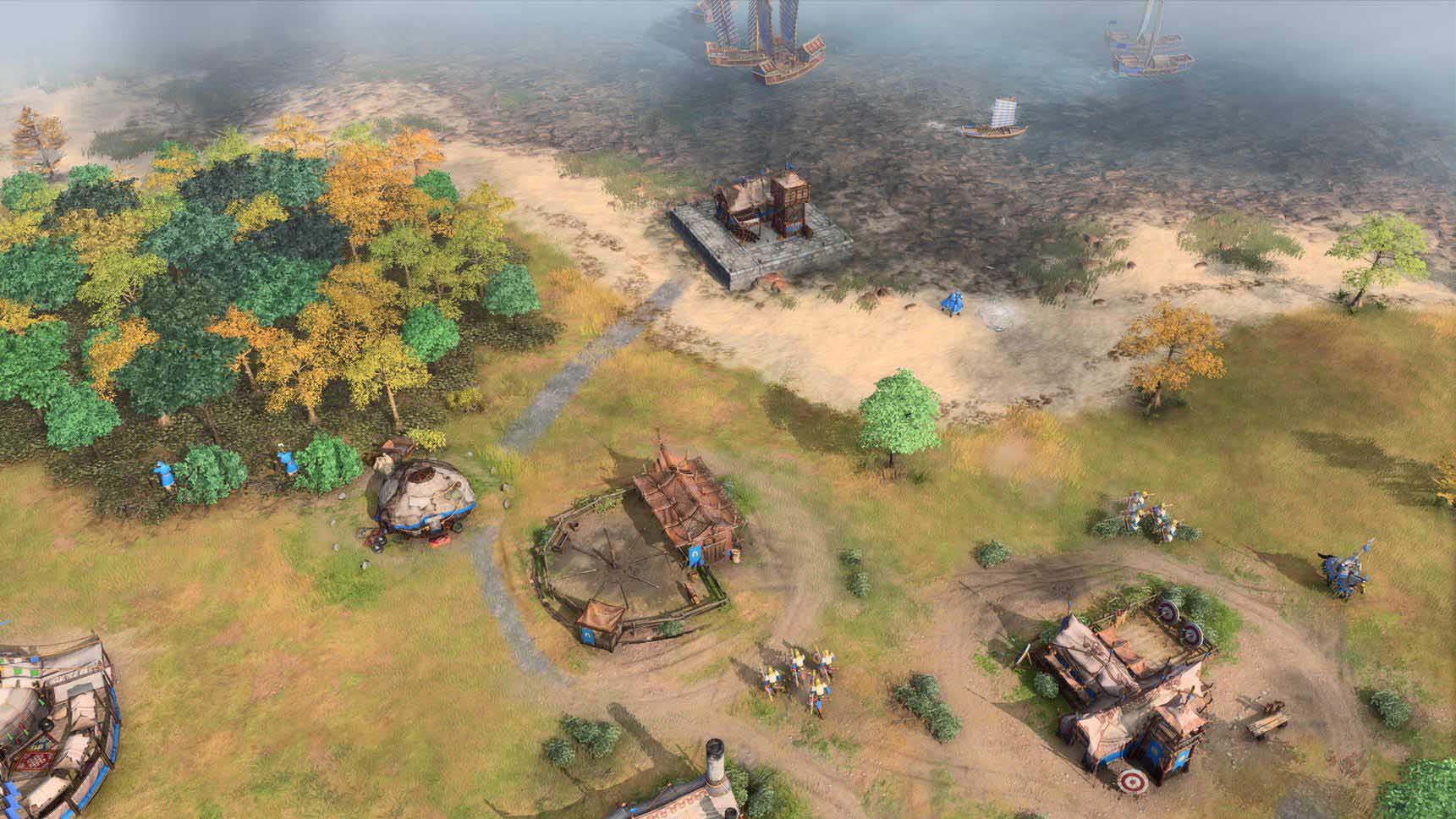
Mongols are set up from the start to be a quick force that can raid and retreat before the enemy reacts. Early Horsemen are available from the Dark Age and on, making the early game a danger for any enemies. Raiding with Mongol units doesn't just weaken the enemy; setting buildings on fire grants 50 food and 50 gold. The unique Khan unit — granted automatically — can group with your units to provide significant buffs via Signal Arrows. When downed, the Khan respawns after some time.
Perhaps the deadliest unit on the Mongol battlefield is the unique Mangudai. These mounted archers can fire on the run, though their range isn't particularly impressive. These units are best used with micromanagement that keeps them just a few steps ahead of any pursuing enemies. Kiting an army around the map will soon end in ruin for the enemy.
Rus
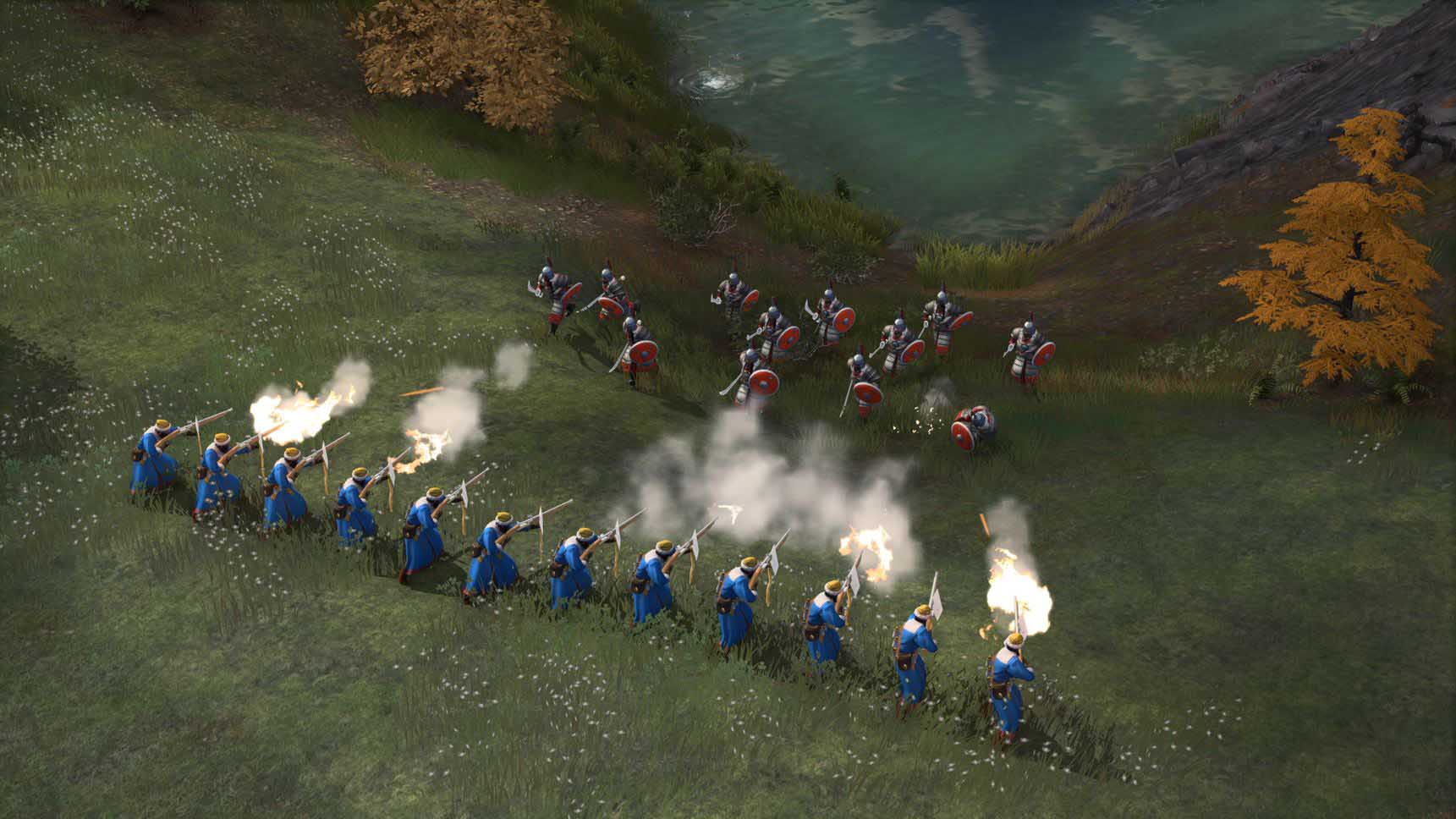
The Rus are pulled from the era between 882 and 1547 CE. They are built for quick expansion — especially in heavily forested areas — and they have strong defenses that play well with economic buildings. This civ has a two-star difficulty rating, making it better suited for those who understand the basics of the RTS genre.
Playing as the Rus, you'll no doubt want to focus on chopping wood and hunting wild animals. The unique Hunting Cabin, available from the Dark Age and on, acts as a place to drop off food. It also generates gold in an amount based on how many trees are nearby. The Hunting Cabin can also produce Scouts to help with quick expansion. The Rus also have a unique Wooden Fortress building available in the Dark Ago and on. Its sight and damage can be upgraded immediately, and any Lumber Camps in its vicinity produce 20% more wood. For even more defenses, Palisades have twice as many hitpoints.
Hunting, forestry, and strong defenses play together incredibly well with The Rus. Map domination should be top priority.
There is a bounty system at play with the Rus. Hunting wild animals generates gold and increases your bounty; a higher bounty increases the amount of food generated by all sources. If that wasn't enough, Fishing Ships don't have to drop off food at a Dock. It's automatically added to your resource pool.
Even the religious units for the Rus won't go down without a fight. Unique Warrior Monks are mounted units that can do everything a normal Monk can do, but it can also fight, buff combat capabilities of nearby units, and heal nearby units.
The Rus have access to the Early Knight unit starting in the Feudal Age. It's heavily armored and will pose a threat to any enemies who aren't on their toes defensively. And the unique Streltsy, available in the Imperial Age, is a ranged gunpowder unit that can deal out a ton of damage at a lower cost than the regular Handcannoneer.
Wrapping up
This is a rather basic overview of the civilizations in Age of Empires 4, but it should help give you an idea of which one you want to sink some time into first. If you're worried that your current PC might not be able to run the game, be sure to have a look at our Age of Empires 4 system requirements guide. And if you do need a new PC, our collection of the best gaming laptops should have something suitable.

Cale Hunt brings to Windows Central more than eight years of experience writing about laptops, PCs, accessories, games, and beyond. If it runs Windows or in some way complements the hardware, there’s a good chance he knows about it, has written about it, or is already busy testing it.
